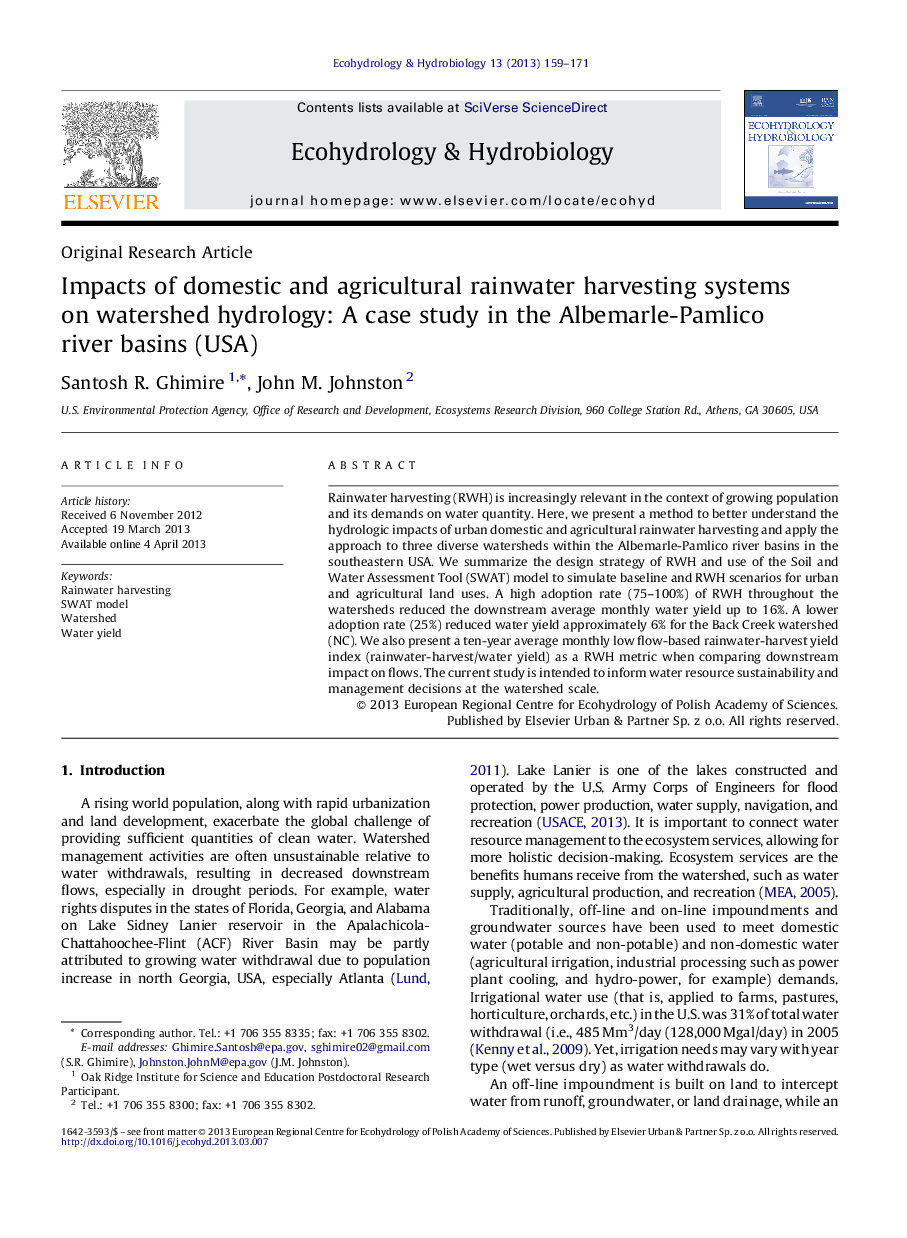| Article ID | Journal | Published Year | Pages | File Type |
|---|---|---|---|---|
| 4388061 | Ecohydrology & Hydrobiology | 2013 | 13 Pages |
Rainwater harvesting (RWH) is increasingly relevant in the context of growing population and its demands on water quantity. Here, we present a method to better understand the hydrologic impacts of urban domestic and agricultural rainwater harvesting and apply the approach to three diverse watersheds within the Albemarle-Pamlico river basins in the southeastern USA. We summarize the design strategy of RWH and use of the Soil and Water Assessment Tool (SWAT) model to simulate baseline and RWH scenarios for urban and agricultural land uses. A high adoption rate (75–100%) of RWH throughout the watersheds reduced the downstream average monthly water yield up to 16%. A lower adoption rate (25%) reduced water yield approximately 6% for the Back Creek watershed (NC). We also present a ten-year average monthly low flow-based rainwater-harvest yield index (rainwater-harvest/water yield) as a RWH metric when comparing downstream impact on flows. The current study is intended to inform water resource sustainability and management decisions at the watershed scale.
